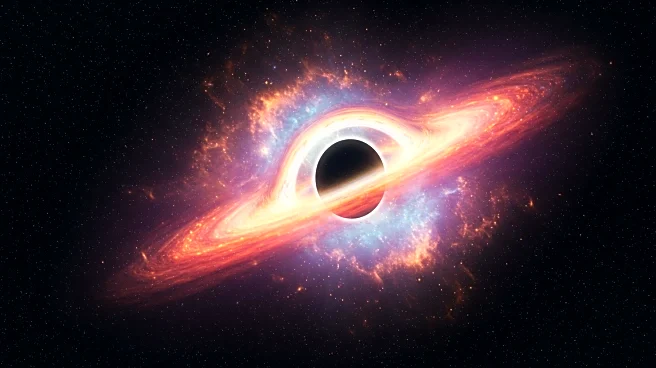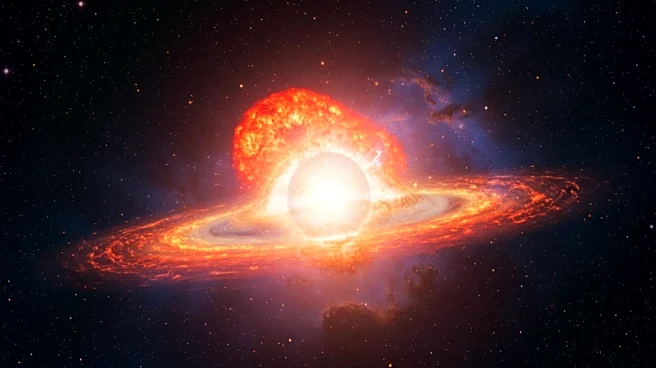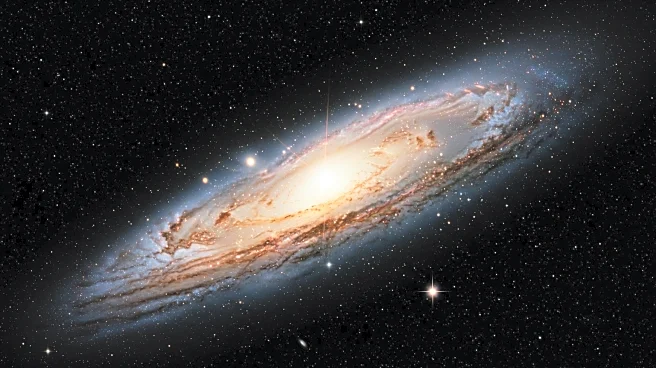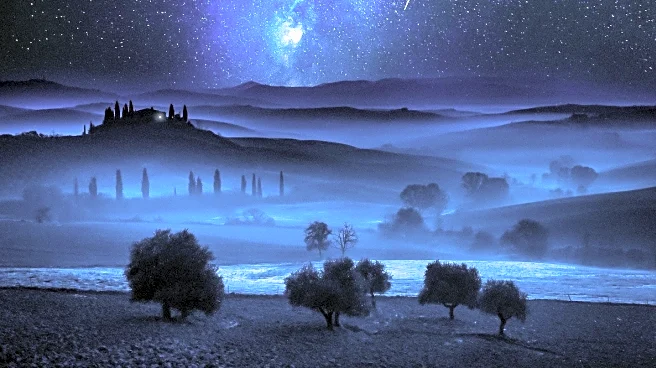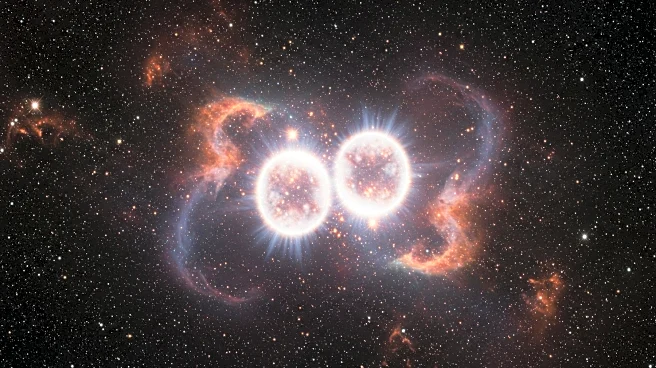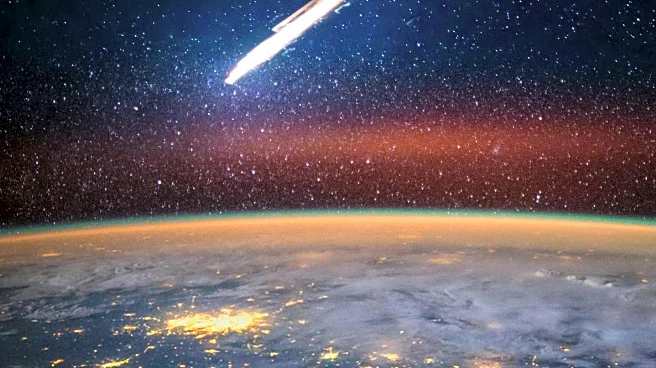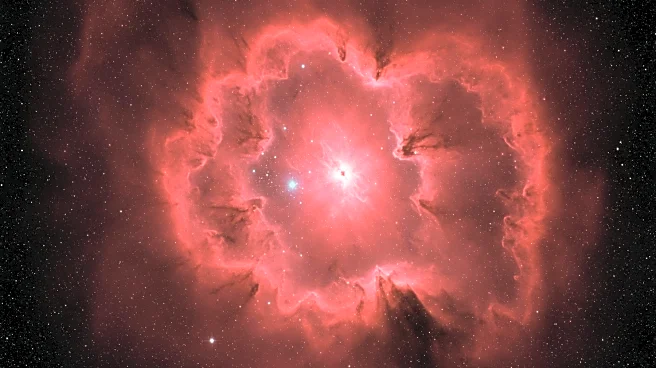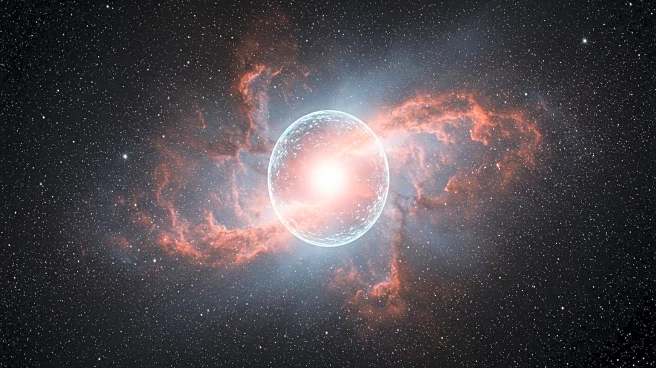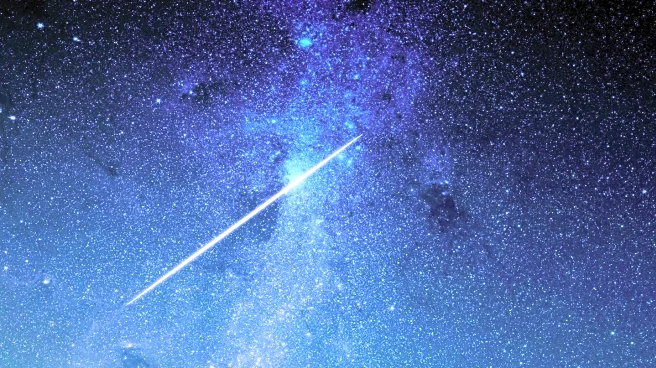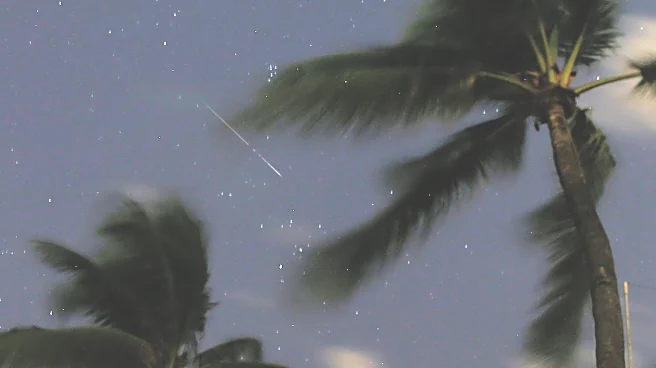What's Happening?
Astronomers have discovered a new type of supernova, SN 2023zkd, located 730 million light-years from Earth, which appears to be triggered by a merger between a massive star and a black hole companion. The discovery was made using an AI algorithm called Light curve Anomaly Identification and Similarity Search (LAISS), which flagged the explosion as anomalous. The supernova exhibited unusual pre-explosion brightening and a double-peaked light curve post-explosion, deviating from typical Type IIn supernovae behavior. This represents the strongest evidence to date for a supernova triggered by a star-black hole merger.
Why It's Important?
The discovery of SN 2023zkd highlights the potential of AI in identifying rare astronomical events and provides a blueprint for an entirely new class of stellar death. This event opens a new window onto the complex lives of massive stars in binary systems, promising more discoveries to come. The use of AI algorithms in astronomy is becoming increasingly important as next-generation observatories generate unprecedented amounts of data, allowing for the automatic detection of rare events as they happen.
What's Next?
The findings from the study will be published in the upcoming issue of the Astrophysical Journal. As AI continues to play a crucial role in astronomy, future observations and analyses may uncover more instances of similar supernovae, further expanding our understanding of stellar interactions and deaths. The ongoing collaboration between AI and astronomy promises to reveal more hidden cosmic phenomena.
Beyond the Headlines
The discovery of SN 2023zkd challenges traditional assumptions about supernovae and highlights the importance of interdisciplinary approaches in scientific research. The integration of AI in astronomy not only enhances the ability to detect rare events but also encourages the development of new theories and models to explain complex cosmic interactions.
